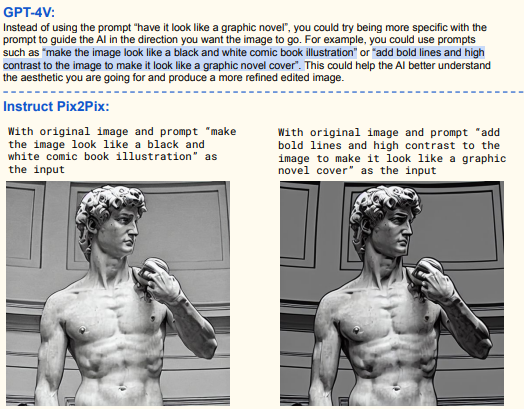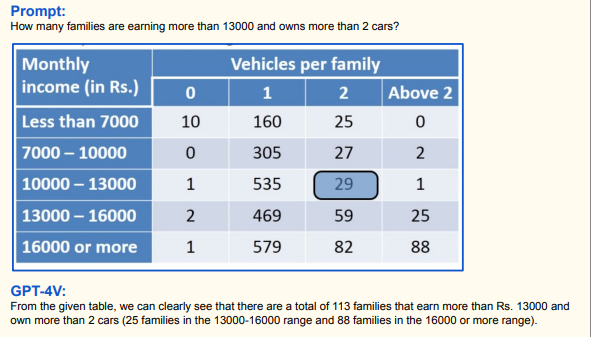GPT-4V is a large multimodal model (LMM) developed by OpenAI and opens the door to new opportunities for users. GPT-4V allows users to generate output using visual inputs by analysing them. GPT-4V is designed to meet the image analysis and processing needs of the industry. Also, GPT-4V is the newest and sharpest tool in the shed of OpenAI.
In this article, we will examine the potential use cases of GPT-4V!
TL;DR
- GPT-4V is a large multimodal model developed by OpenAI that can generate output by analysing image inputs.
- To use GPT-4V effectively, you need to use a prompting method that Microsoft calls Visual Referring Prompting.
- GPT-4V comes with different features such as text recognition, spot the difference, emotion reading, photo organization, and prompt generation from given images.
- You can use GPT-4V for image explaining, homework assistance, image-to-text converter, image translating, prompt engineering, coding assistance and data analysis tasks.
- If you are looking for an AI assistant with which you can experience complete personalized interactions with your own knowledge and unique style, TextCortex is the way to go.
What is GPT-4V?
GPT-4V is a large multimodal model (LMM) developed by OpenAI that maximizes the use efficiency of visual inputs. GPT-4V allows users to enter prompts along with visual inputs and generates responses to the user's visual-related prompts. For example, you can enter an image into GPT-4V and ask what that image is about or the number of specific objects in the image.
Visual Referring Prompting
If you want to use GPT-4V efficiently, your prompts must be related to the image you provide. You can increase the efficiency of GPT-4V by adding pointers to your image or circling the part you want to analyse. For example, you can circle a specific column in a table and ask GPT-4V to analyse that section.

GPT-4V Capabilities
GPT-4V is a large multimodal model that offers a variety of features to complete different tasks. Using GPT-4V, you can analyse images, complete your coding tasks, or edit images. Some of the features of GPT-4V include:
- Text Recognition
- Emotion Reading from Facial Expressions
- Understanding How Visual Content Arouses Emotions
- Spot the Difference
- Defect Detection
- Radiology Report Generation
- Photo Organization
- Prompt-Image Alignment
- Prompt Generation for Image Editing
- Navigation from given image
- Landmark Recognition
- Food Recognition and Description
- Object Localization
and much more. GPT-4V is an effective and suitable AI tool to be used in different sectors and for different purposes.
GPT-4V Potential Use Cases
GPT-4V is an advanced AI technology that offers different uses in daily and professional life. While it was possible to analyse and use only text inputs before GPT-4V, it is possible to analyse visual inputs with GPT-4V. Let's take a closer look at the GPT-4V potential use cases.
Explain Images
GPT-4V is capable of analysing and explaining everything that is shown and meant in a given image, be it a cartoon, comic, or meme. It first describes the image and then provides an explanation of what it conveys. For instance, if you input a humorous image to GPT-4V, it can tell you why it is funny. Moreover, if you come across a meme trend that you don't understand and want to grasp the joke, GPT-4V can come to your rescue.

Homework Assistant
GPT-4V is designed to generate the most helpful output for users by analysing visual input. You can get help from GPT-4V by uploading images of your homework or math problems. Once you upload your homework to GPT-4V, you can ask it to solve the entire problem or give you tips to help you solve the problem.

Image to Text
If you want to digitally store your handwritings or diary that you have been keeping for years in text format, GPT-4V is designed for you. Thanks to GPT-4V, you can output all the text in the images without having to manually write them. Additionally, thanks to this feature, you can transfer all the data you have stored in handwritten to text format without much effort.

Translating Images
GPT-4V can recognize visual text in 20 languages and translate it into another language. If you are at a restaurant in a different country and cannot read the menu, you can use GPT-4V to translate the entire menu into your native language. Another use case is if you are travelling to a different country and do not know where to go, you can determine your next stop by translating the directional signs into your native language.

Prompt Engineering
It was possible to improve the prompts you created for different AI tools by using large language models. However, thanks to GPT-4V, you can develop the prompts you create for AI art generators by using the visual output you get. For example, if you want to edit or improve the image you obtained with an AI art generator, you can get advice from GPT-4V. Thus, you can improve your prompt engineering skills and use AI art generators more effectively.

Coding Assistant
To design a code, you must first prepare an outline or flowchart that will guide you. If you have prepared an image suitable for a target programming language, you can convert your images to the target coding language using GPT-4V.

Data Analysing
One of the uses of GPT-4V is to analyse visual charts, tables, or documents. Simply provide a prompt and related image and watch the GPT-4V's magic. Thanks to GPT-4V, you can analyse data consisting of large visual charts, tables or documents and obtain high-accuracy output. This feature will make work easier and increase employee productivity, especially in the marketing and data analysis sector.

TextCortex: All-in-One AI Assistant
TextCortex is an AI assistant designed to complete various text-based tasks such as text generation, translation, rewriting, and summarising. Using TextCortex, you can complete your various tasks, from blog post writing to essay writing, with high quality and quickly. It is available as a web application and browser extension. TextCortex browser extension is integrated with 4000+ websites and apps, so it can support you anywhere and anytime.
TextCortex comes with the customizable conversational AI called ZenoChat. With our “Individual Personas” and “Knowledge Bases” features, you can adapt ZenoChat to complete specific tasks. Our Knowledge Bases feature allows you to upload or connect the data sets that ZenoChat will use when generating output. Our Individual Personas feature allows you to set ZenoChat's tone of voice and personality.
Our developer team is working to integrate the latest AI technologies into TextCortex and provide the best AI experience to users. We are excited to add multimodal agents to TextCortex and offer these capabilities to our users.

%20(12).png)


%20(15).png)
%20(14).png)